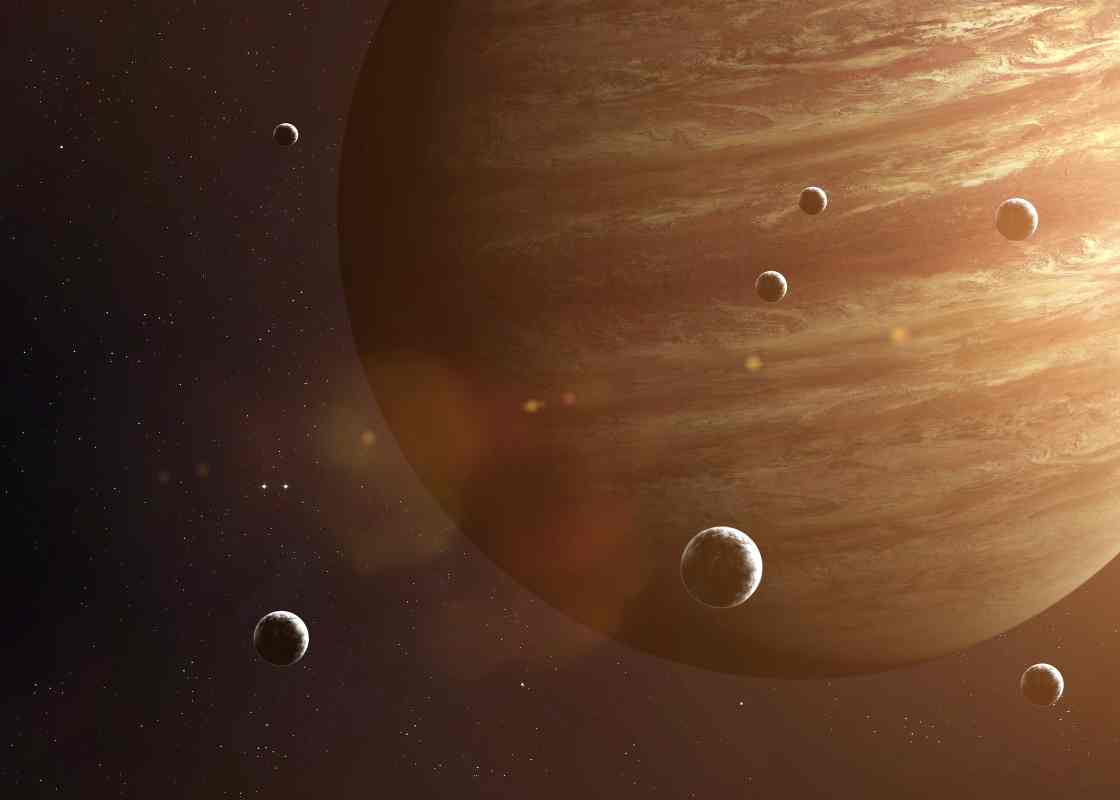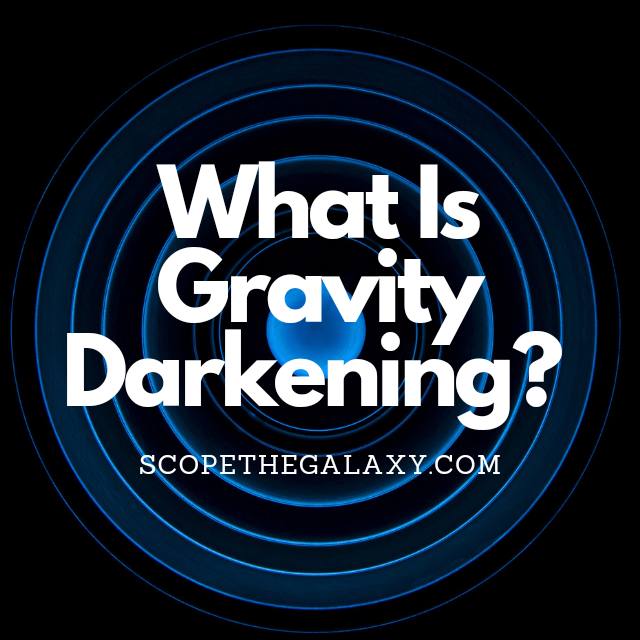*This post may contain affiliate links. This means we may make a commission if you purchase an item using one of our links*
Gravity darkening is an astrological phenomenon where a star’s poles are brighter than its equator. This is caused by the speed of the rotation and the star’s oblate shape, which pushes the equator further from the star’s core, creating a lower pressure and temperature. When this happens, the region dims in a phenomenon known as gravity darkening.
Continue reading to discover how and why gravity darkening occurs, why some stars experience brightening and darkening, and how their spheroid shape affects this phenomenon. Plus, learn the effects this type of star could have on a planet in its orbit.
How Does Gravity Darkening Happen?
Table of Contents
An oblate sphere is a sphere that appears as though it has been squashed from the top, which means that the circumference around the equator is longer than the circumference around the poles. These shapes are also known as ellipsoids and possess a rotational symmetry around a pole-to-pole axis.
The majority of planets – including Earth and Saturn – are oblate, though the difference between Earth and a perfect sphere is a much smaller margin than other bodies. Most stars are also oblate spheroids thanks to their spin; the faster they spin, the flatter the spheroid becomes. And these speeds have extreme variances.
For example, our Sun spins at a rate of approximately 2 km per second, whereas neutron stars spin at speeds of thousands of kilometers every second.
Thanks to these rapid rotational speeds and the oblate shape of the stars, they possess a larger circumference at the equator than the poles. This means the surface gravity is greater at the poles, so they require higher pressures and temperatures to maintain hydrostatic equilibrium.
In simple terms, hydrostatic equilibrium is when a star perfectly balances its internal pressure against its gravitational pressure. When these two forces match, a star has hydrostatic balance. Still, the poles are closer to the star’s core, so they feel a stronger gravitational pull. This increased gravity exerts a higher pressure on the area and causes the temperature to rise.
As the poles are hotter, they glow brighter in a phenomenon known as “gravity brightening.”
In contrast, gravity darkening occurs in areas where the gravity – and thus the pressure and temperature – are lower. The equator, for example, is a lot cooler (relatively), so it experiences gravity darkening – simply meaning it shines less brightly.
Why Does Gravity Darkening Occur?

The Von Zeipel Theorem explains why gravity darkening occurs – the radiative flux on a stellar surface is proportional to the effective gravity. This means that regions closer to the poles of a rotating star will shine more brightly than the areas close to the equator.
The equatorial bulge of a star happens centrifugally because of rapid rotation, which is why faster spinning stats experience more gravity darkening than stars with a low spin rate. The centrifugal force at the equator pushes mass further from the rotational axis, which results in less overall pressure within these regions.
Less pressure equals lower heat, and the lower heat generation means the star shines less brightly in this region.
Still, the Von Zeipel Theorem does not provide a complete answer, and further research suggests that the theorem overestimates the temperatures at both the equator and the poles.
Gravity darkening is important to scientists because it helps them to understand the brightness distribution of stellar bodies that rotate rapidly and determine the position of the rotation axis from the line of sight. More fascinating still, what would happen if a planet were to orbit one of these gravity-darkened stars?
On Earth, we experience changing seasons thanks to our planet’s tilted rotational axis, which varies the amount of Sun radiation each hemisphere receives as it travels around an orbital path. However, things could look quite different if our Sun experienced gravity darkening.
Stars are made of gas, so when their equator bulges outward, this gas is subject to lower temperatures and pressure. Therefore, these rapidly rotating stars have a kind of temperature gradient that increases as you head toward the poles.
This phenomenon could cause temperatures to fluctuate by as much as 15% on a planet’s surface, which would roughly double the seasonal temperature variations of a planet in a single orbit. In addition, planets with a highly inclined orbit could receive a variance of up to 80% in their UV radiation.
These variations would occur because the hotter regions (such as the poles) would emit more UV radiation than the equatorial region. These high levels of UV could cause the atmosphere of a planet to evaporate, along with causing other photochemical reactions. As scientists explore an increasing number of exoplanets, we may encounter this phenomenon and better understand its implications for a planet’s habitability.
Summary
Gravity darkening occurs because rapidly rotating stars are drawn into an oblate spheroid shape, which causes an increase in pressure at the poles. The increased pressure makes the temperature higher, which causes the area to glow. In contrast, the equator is pushed away from the star’s core, giving it a lower pressure and temperature, meaning that it darkens.
References
Gravity darkening – Wikipedia
The Mysterious Phenomenon Of “Gravity Darkening” (gizmodo.com)
Gravity-Darkened Seasons on Planets | astrobites

